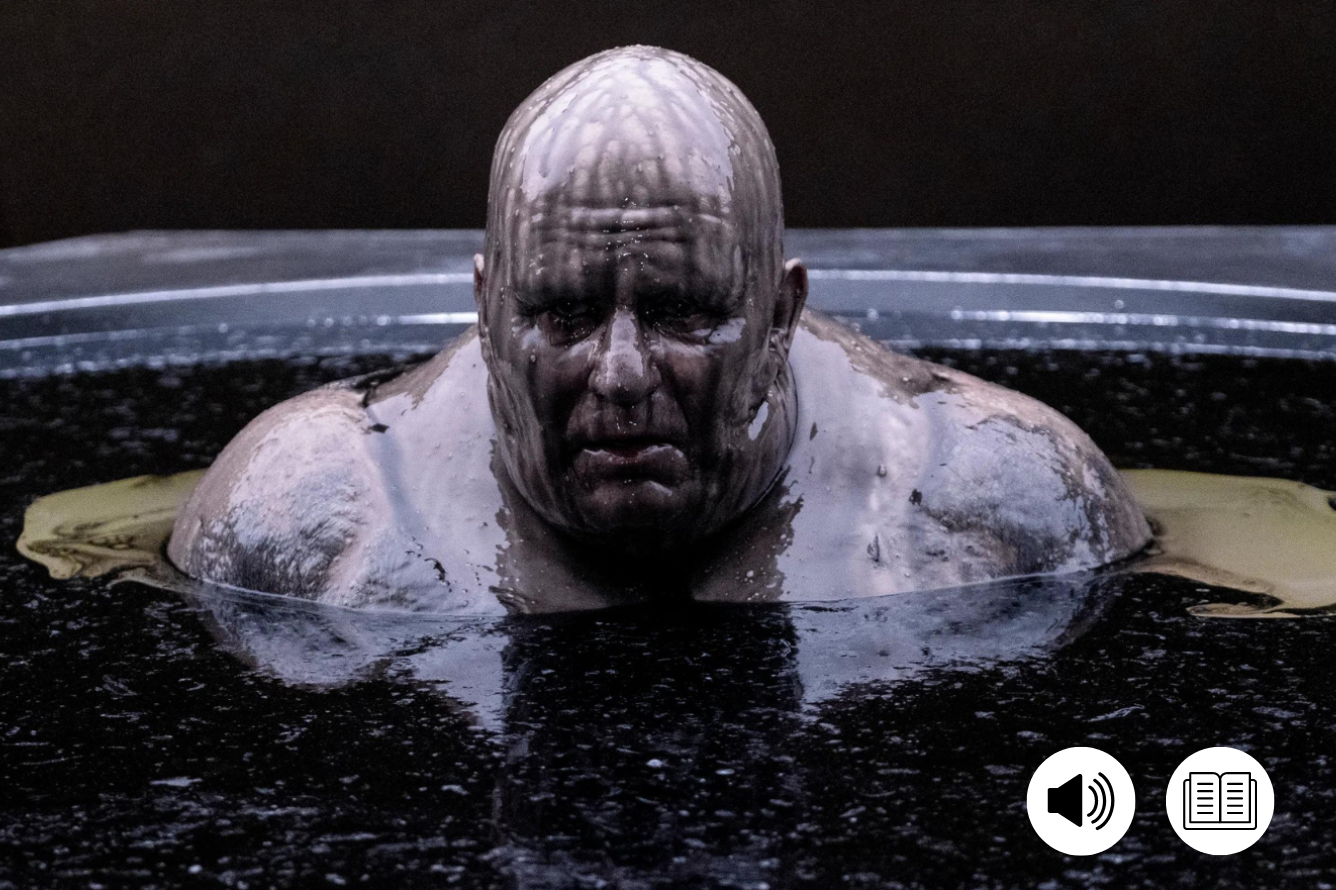In what was either the most shameless or the most clueless attempt to capitalize on the popularity and merchandising prowess of Star Wars in the 1980s, Universal Pictures decided that Dune was for children.
Their outreach to this demographic and their parents’ wallets included an entire line of kid-“friendly’ toys and ephemera released in conjunction with the December 1984 premiere of David Lynch's film. Products included action figures, read-along books with records, Fremen weapons with flashing sounds and electronic lights, a posable Sandworm figure, and a series of six coloring and activity books "Based on the Spectacular Movie!"
But Star Wars was a well-crafted, accessible space romp for children of all ages. And while Dune has steadily earned a cult following, it was more of an inaccessible adaptation of an arguably unfilmable book from a visionary-but-frustrated director that bore the scars of studio meddling and was arguably not suitable for most people of any age. Children showed little to no interest in Dune and avoided its movie tie-ins like someone who knows full well that they’re not the Kwisatz Haderach might avoid the Reverend Mother’s box.
As the products disappeared from catalogs and store shelves, though, a couple of them eventually found their way to their target audience.
In 1988, my parents rented a copy of Dune on Beta. Shortly after putting their sleep-disordered six-year-old to bed for the night, they attempted to watch it. They thought they could make it through the 137-minute runtime before I inevitably woke up. That plan was as overambitious as the film they were watching. As the third-stage Guild Navigator set off to Kaitain to demand details from the Emperor, I regained consciousness and went in search of my parents. I found them staring at a screen full of fancy people talking to a giant fish tank.
An Early Obsession with Dune
Thirty-three years later, I still remember this moment absolutely clearly. I noticed that there was something floating in the tank. It was big and kind of orange, with a wrinkled face and a head that looked like a bum. It was kind of ugly in a way that made me a little nervous and made my nervous stomach churn a little, but I also couldn’t look away. It was the coolest thing I had ever seen in my short life. Breathlessly, I gasped “What is that?!”
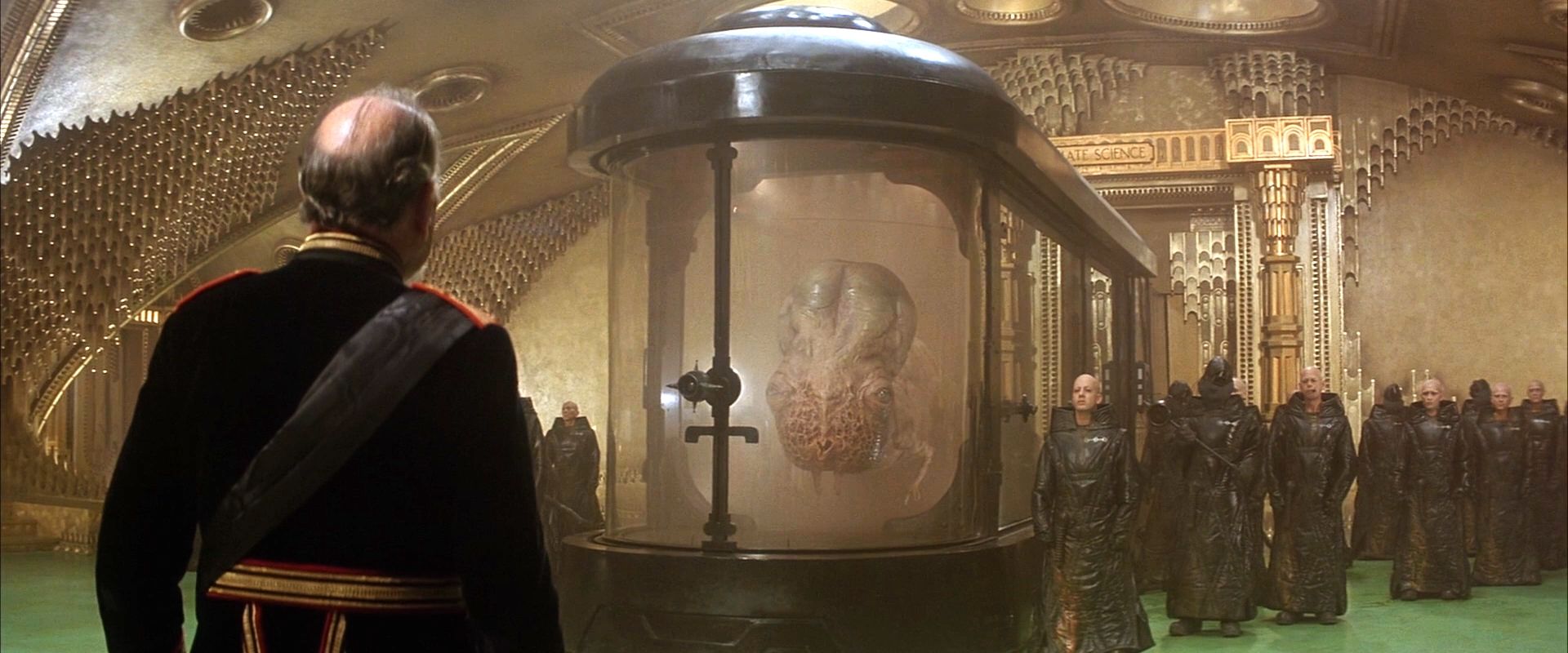
My parents could have hit pause and taken me back to bed, but they realized an important truth at that moment: there’s really no going back from the moment your kid becomes obsessed with a gangly, vaguely vulvar-faced space creature. She’s not going to magically unsee or forget about her new best friend in the entire universe. Concluding that whatever harm could come from allowing a child to watch Dune had already occurred, they explained what they’d already seen—or at least what little they understood of it— and let me stick around for the rest.
I didn’t get a lot of the movie, and my attention drifted in and out over the course of the next two hours, but the parts I liked I really, really, really liked. My personal highlights included Paul Atreides doing shield practice, Paul passing the box test, Jessica Atreides being pretty, Baron Harkonnen floating through the air and oozing black stuff, Paul knowing how to put a stillsuit on, Paul riding a worm, people having really blue eyes, Alia yelling at all of the bad people, Alia dancing in the fire, and, of course, the Guild Navigator. I spent the next few months asking to watch those scenes again and trying to explain them to patient but thoroughly confused relatives, teachers, and classmates. I also started pretending that I was Alia. In retrospect, it wasn’t much of a stretch.
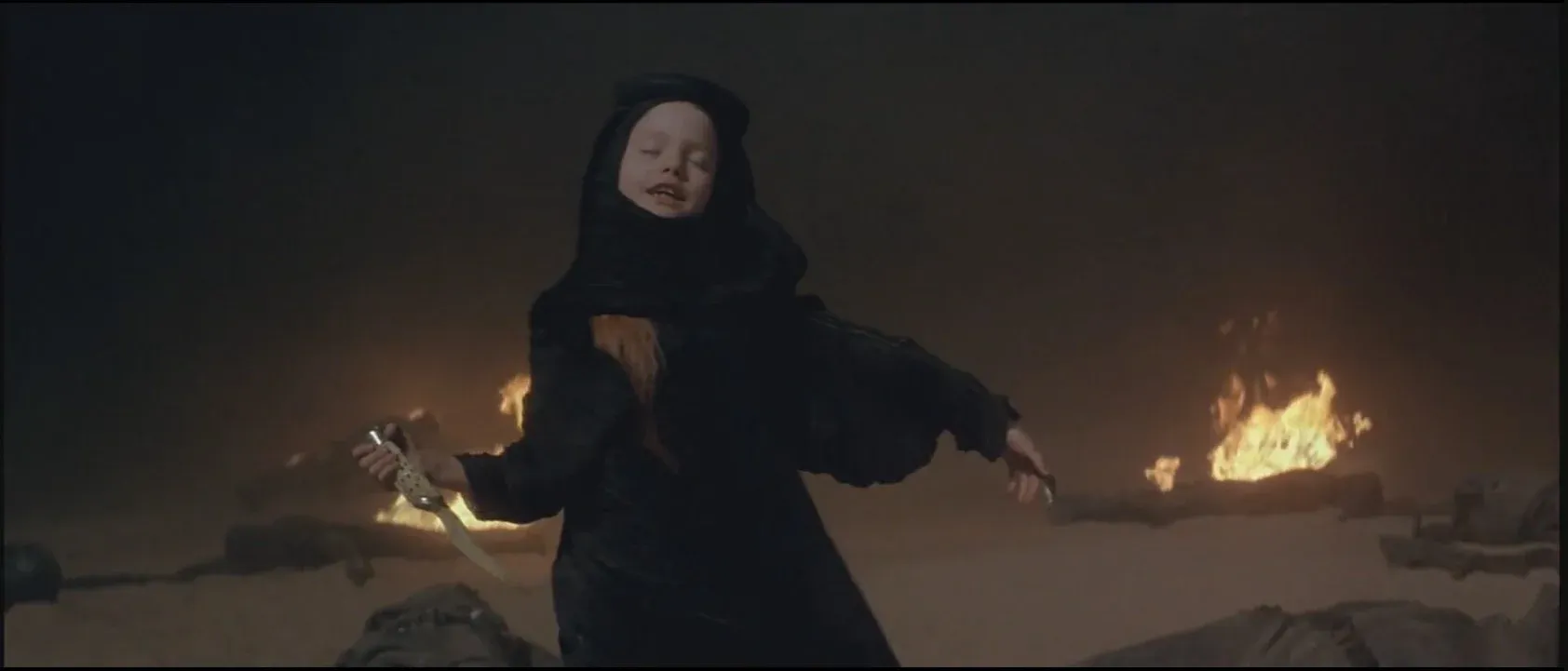
Mom and Dad were firm believers in nurturing their child’s curiosity and interests, whatever form they might take. When the December 1986 issue of National Geographic sparked an intense fixation on the Titanic, for example, they did everything from sourcing books and videos to carting me around to museum exhibits, historical society meetings, and a lecture by none other than Dr. Robert Ballard.
For this particular obsession, their efforts were mostly limited to watching my favorite scenes with me and listening to me talk about them until a chance visit to the local Towers changed everything. In the four years after its stupendous failure, the dregs of Dune’s marketing push had somehow made their way to the bottom of a three for 99 cent bin in a Canadian discount department store in our small town, just in time to catch the eye of two very earnest but tired and confused young parents eager to inspire their weird kid. This is how I became the proud owner—and user—of the Dune Coloring Book and Dune Puzzles, Games, Mazes, and Activities.
Discovering the Dune Coloring and Activity Books
The Dune coloring and activity books have slowly developed their own cult following over the past four decades. Although maybe it’s more accurate to say that the concept of the books has attracted a perversely amused audience. A quick Google search will lead you to posts on the topic from all sorts of comic, sci-fi, and fandom outlets.
They all feature the same photos of untouched pages, but each offers its own sardonic take on the subject matter. Coilhouse’s Meredith Yayanos, who stumbled across copies in “a dingy dollar store in rural upstate New York” in college and posted the original photos in 2011, calls the Coloring Book “44 pages of lurid scenes featuring conspiratorial characters from the film.” Comics Alliance’s Jason Michelitch describes their genesis as “the marketing department was blithely trundling along, turning psychosexual alien faces, psychopathic royalty, and intergalactic narcotics into fun all-ages activity pages.” In reference to a page featuring a close-up of Baron Harkonnen, Jamie Frevele from The Mary Sue quips “If there’s anything kids — a special kind of kid—like more than coloring, it’s pustules.”
I believe that the books have earned their current reputation. It’s not like any of the above assessments are untrue or particularly unfair. I barely remember my life before the Dune coloring books, and I still sometimes find myself thinking about them with a mix of awe, delight, and maybe even a little horror. They are truly bizarre. It is truly baffling that they were imagined and pitched at all, let alone actually produced. But as a former “special kind of kid,” well… I really did love those pustules.
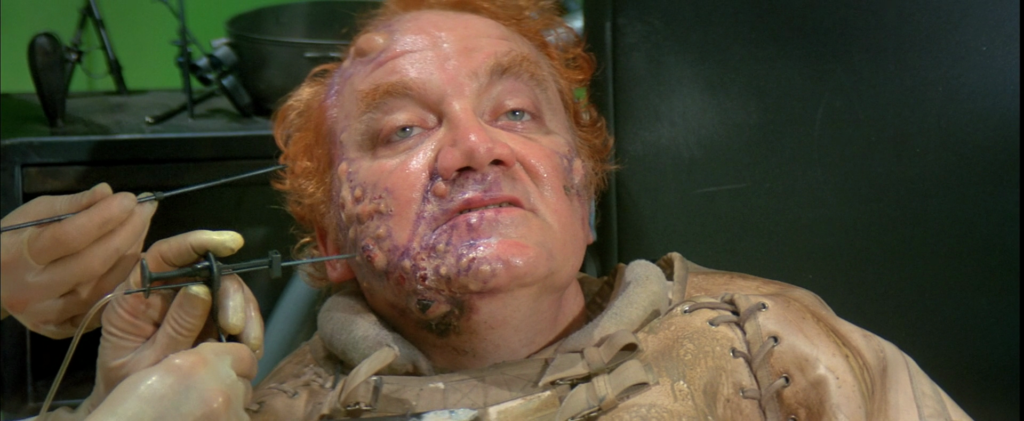
In the outside world, my burgeoning Dune fixation wasn’t going that well. My parents were as enthusiastic as always, but the relatives, teachers, and classmates I was trying to regale with my exciting new tales of a desert planet were somewhat less receptive. In retrospect, I can hardly blame them. Most people had struggled to appreciate Frank Herbert as interpreted by David Lynch with a heaping side of studio interference. Those poor folks were being inundated with all of the above as seen through the eyes of a six-year-old who provided even less context and cohesive narrative. Besides, I imagine a child gushing about death hand boxes and flying men who rip people’s heart plugs out was a little unsettling. But at the time, it did sting a little to have people respond to me like they were Mother Superior recoiling from Alia.
In those pages, though, I thrived. I have some fond and surprisingly lucid memories of coloring and puzzling in my books. Flipping through the puzzle book and filling in all of the answers that were about Alia and Jessica. Desperately trying and failing to figure out how the hell to spell “Jessica.” Coming to the conclusion that a drawing of the Baron’s face was unsatisfactory, and that I was going to have to color outside of the lines if I wanted to get it right in the Dune Coloring Book. Studiously combing through my 72-color crayon set to find just the right shades of orange for my beloved Guild Navigator, Feyd’s hair, the sandy hues of Arrakis, and its most famous wildlife in both.





Thanks to my family’s mild hoarding tendencies, I also have the books themselves. They’re among my most prized possessions, not only for their twisted little bit of pop culture cache but also for their glimpse into my younger self. Looking at Dune Puzzles, Games, Mazes, Activities hammers home just how young I was when I was breathlessly throwing myself into my fledgling fandom. I’ve left so many pages blank or lightly scribbled, but I don’t think it was for lack of interest. A lot of the titular challenges were simply above my abilities at that age. (Yes, I recognize the absurdity of word searches, basic crosswords, and connect the dots being a bit too mature for anyone who was watching and love the specific film these ones were based on.)
The games I did grasp are filled out in very heavy, overenthusiastic beginner’s handwriting that often threatens to puncture the pages. My favorite of these is a completed cryptogram that reads “KWIZATZ HADERACH” in clumsy capital letters. I really did not know how to spell “Jessica,” though. “Paul” seems to have been a bit of a struggle, too.
In the coloring pages, I was on fire, rendering Sandworms in mixed media masterpieces of crayon, marker, and pastels, dutifully filling in House Atreides uniforms, Bene Gesserit robes, Paul’s hair, and the right pec of Stilgar’s stillsuit in black, and blending light peaches and dark purples all over Harkonnen’s face. There’s an impressive commitment to realism in a lot of the work, but some intriguing flourishes of artistic license, too. Something possessed me to give Jessica (aka JESaca, a.k.a. Jissaca) a truly smashing purple and pink ensemble. In lieu of writing my own name on the inside cover, I went with “Arakiss, Arackiss, allso known as Dune, DUNE” and a pie graph that doesn’t appear to represent anything. The back inside cover features an abstract drawing that I’m going to chalk up to Lynchian influence. I also gouged a significant amount of bright blue into eye sockets of a pre-spice Paul, but I’m not sure if that was a creative liberty or continuity error.
What strikes me most about my copies of the books is the palpable glee and devotion scattered throughout them. The rush I got from death box tests and shield fighting and sandworm riding and Baron torturing is evident in every furious crayon stroke. And the amount of care I had for some of these characters can be seen in the softer strokes. It’s particularly clear in a very lovingly and delicately colored portrait of Alia, which must have taken me ages and a great deal of self-restraint given my limited manual dexterity at that age. I’m sure someone could argue, fairly credibly, that these books were the work of a disturbed young mind. But no one can deny that they were the work of a disturbed young mind that was, however briefly, in its element.
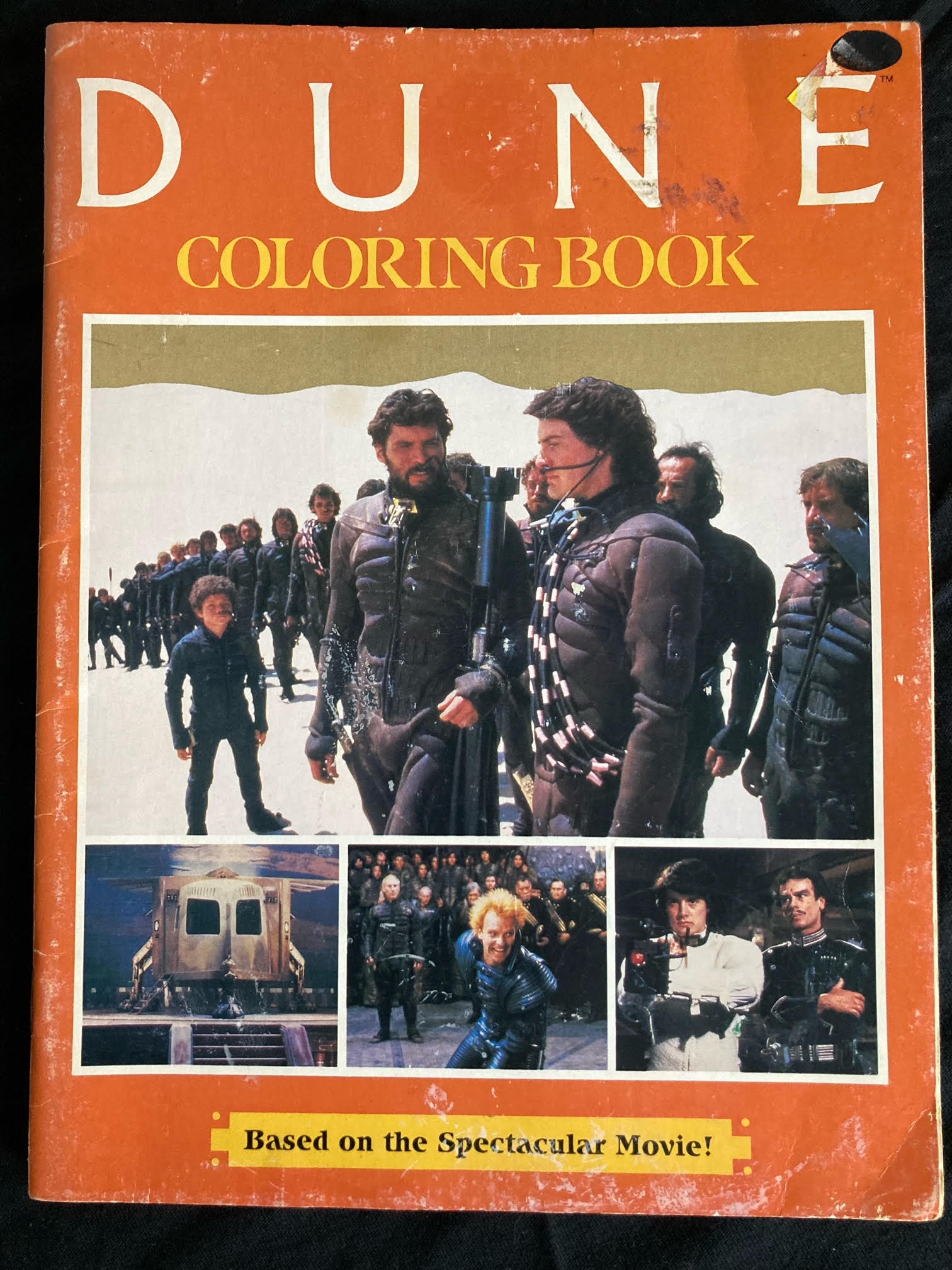





Reflecting on Dune
Twenty-one years, countless more odd and intense interests, one ongoing over-identification with Alia, and a whole slew of issues I don’t need to get into for the sake of this essay, I was finally diagnosed as autistic. This did not come as a surprise to a lot of people who knew me as a child. Maybe it won’t come as a shock to any reader who has made it this far. I think I mentioned Dune during my assessment. It definitely came up repeatedly in my subsequent therapy and my early writing on autism.
I suspect that a part of me just wanted to brag about my sweet coloring books again, but I’ve also come to understand my early Dune fandom as a small but pivotal moment in my understanding of the world and how I related to it. My early special interests had been cute to the adults around me, who would ask me questions about dinosaurs and Titanic and listen to me go on at length. They were sometimes even relatable to other kids, who would eagerly discuss them with me. This kind of indulgence did not extend to Sandworms. I’d always known that I was different, but this was my first hint that maybe people didn’t like different so much.
There might never have been a mass market for Dune-themed children’s products, but that bizarre miscalculation eventually led to a situation where a weird and isolated child got to do normal kid stuff like coloring and mazes with characters she really loved for just a little while longer. These products certainly had the potential to warp a lot of childhoods, but I think they might have saved one.
This article was first published on September 29th, 2021, on the original Companion website.
The cost of your membership has allowed us to mentor new writers and allowed us to reflect the diversity of voices within fandom. None of this is possible without you. Thank you. 🙂



